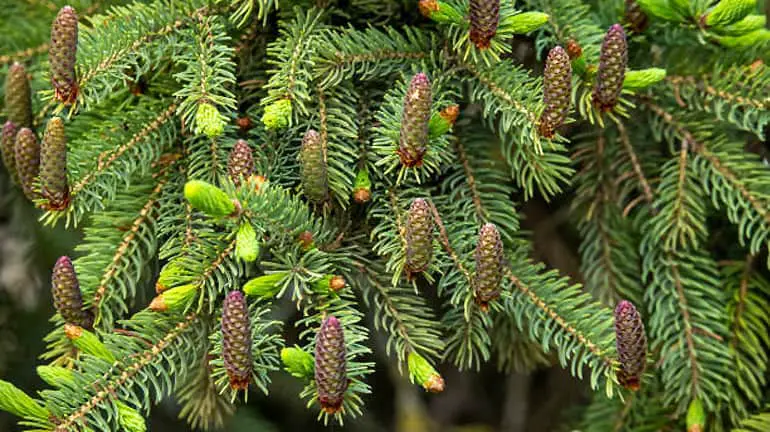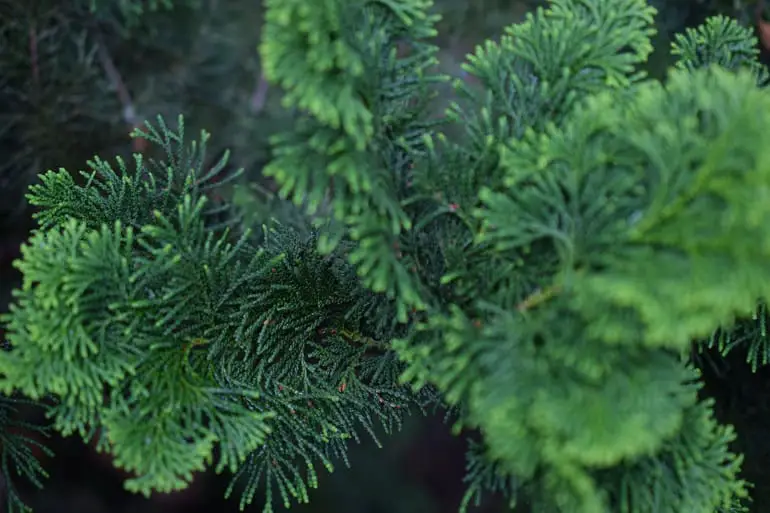Table of Contents
Picea Mariana, known by its common name – Black spruce is an evergreen coniferous tree from the pine family. The tree can be widely seen across Canada, heavily present in the whole 10 provinces as well as in all the 3 territories.
Picea marina is naturally a slow-growing plant and can grow up to about 50fts in the wild, but when used as a Bonsai specimen, it can be trimmed to the standard size of about 5 to 15fts tall. Although the tree serves many purposes, it is used for ornament on Christmas day and is often referred to as the Christmas tree.
Raising a Picea marina Bonsai can be a little challenging which has led many people with the desire to create a permanent Christmas atmosphere in their house by raising the tree as a house plant or Bonsai specimen to embark on a series of unfruitful attempts.
It doesn’t matter whether or not you are familiar with the tradition, a similar fate may await you. However, with the carefully explained care requirements below, you will be able to make remarkable progress. Keep reading for details.
General information
| Common name | Black Spruce |
| Family | Pinaceae |
| Height | 7 – 9fts |
| Width | 3 – 5fts |
| Native country | North America |
| Lifespan | 40 – 60 years |
| Water | Water only when it dries |
| Sunlight | Summer/spring: Full sun Winter: Semi-shade. Must be protected from frost. |
| Fertilizer | 2 weeks in Autumn and Spring. Does not need fertilizer during summer and winter. |
| Soil | Standard mix with grain |
| Humidity | Medium to high |
| Maintenance | Low |
Can we Bonsai Picea mariana tree?
Yes, you can Bonsai Picea mariana. If you are a beginner or a seasoned Bonsai collector looking to explore the Bonsai tradition with the Spruce tree (Picea mariana), you can definitely go ahead with your desire because they are going to make an excellent Bonsai specimen.
However, you should know that using Picea mariana for Bonsai specimens is somewhat difficult and may not be the best choice if you are being introduced to the Bonsai tradition for the first time. If you are accustomed to the tradition, you can proceed, but be warned, that you might have a problem styling the tree plus it takes time.
Picea mariana tree Bonsai history
Picea mariana is native to northern America and the oldest existence of the tree species is traced back to the early cretaceous about 136 million years ago.
Picea mariana Bonsai scientific name

Picea mariana is the scientific name of the Black spruce tree. Black spruce is the common name for Picea mariana.
Picea Mariana tree Bonsai care
Although the process of having a fully-grown and healthy Picea Mariana tree may challenging to even an experienced gardener, the end product will justify the means. However, this can only happen if you can keep up with the care requirements of the tree. These care requirements are explained in detail below. Keep reading!
Picea Mariana Bonsai’s temperature
The normal temperature level for a Picea Mariana Bonsai is between 7°C – 11°C.
Picea Mariana Bonsai fertilizer
Picea Bonsai favors solid fertilizer more during spring when new leaves are starting to emerge. During this period, ensure that the fertilizer is fed to them at least once in two weeks so that there will be sufficient nutrients for the leaves to develop. Repeat the same thing during autumn so that during winter, it will be able to store enough carbohydrates.
During summer, it is recommended that you feed the fertilizer to them only once a month or stop altogether. Picea Mariana is always dormant during wintertime, and therefore, fertilizers must not be fed to them at all. Although you can spritz their leaves with chelates solution or liquid iron so that their leaves can look rich and healthy.
Picea Mariana Bonsai pruning
The best time to do some light pinching on your Picea Mariana is around mid-spring. This will help to control new growths. Take care not to cut all the needles on the tree branch, so as not to discourage the tree from developing new ones. And lastly, ensure to keep the natural whorl pattern of the tree without tampering with the design.
Picea Mariana shaping
Shape your Picea Mariana Bonsai with wire during late spring when the growth of the tree is slowing down and the tree is less likely to suffer any major damage. You can also take advantage of this period to do some heavy pruning if you need to cut back some large branches.
Picea Mariana Bonsai repotting
If your Picea Mariana Bonsai is still very young, it is best to repot them once in two years as they are likely to develop large root balls at this stage. Make use of a container that is deeper than the standard Bonsai pot size to accommodate the slight changes in size. If root pruning is necessary, be extremely careful when trimming the delicate hairs around the root.
Once the tree gets past the young stage, it should be repotted at least once in 4 to 5 years. This is because the more a Picea Mariana Bonsai grows, the less vigorous its roots become. When at this stage, the tree should be repotted in early spring or during autumn. Just make sure it is done before new sprouts start to appear on the leaves.
Picea mariana pest and diseases
Another challenge often faced by Gardners using Picea mariana for Bonsai specimens is pests and diseases. This is because the tree is a soft target for almost all pests and diseases that are common to other Bonsai trees. Your best bet at growing a healthy Picea mariana tree is knowing the specific pest attacking your tree and taking necessary measures to curtail its growth.
However, Picea Mariana trees are especially vulnerable to spider mites, especially during the summertime when they seek refuge in the green foliages for the tree away from dry weather. Although you can barely see them, you can easily identify their infestation when you see yellow tinges right below your tree branches. Learn how to get rid of spider mites on bonsai.
You might also want to be on the lookout for possible infestation by other insects like gall adelgis, caterpillars, budworms, needle miners, middle casts, and aphids.
Picea mariana Bonsai soil
Picea marina Bonsai is friendly with its soil requirement as it can survive on any kind of soil. Picea marina doesn’t care about the level of alkaline, acid, or neutrality of the soil. As long as the soil has enough organic content, your tree will survive. However, in the first year of the tree, make sure to use soil with grainy substance to encourage stability throughout its growth years.
Also, just like many other Bonsai specimens, the roots of Picea mariana are intolerant to moist or soggy soil, and therefore, you must endeavor to ensure that the soil is well-draining so that your tree will not be vulnerable to fungal disease.
Picea mariana Bonsai watering
Even though most other types of spruce trees will benefit a lot from watering them during spring and summer, the case with Picea mariana is different. Although it would be ok if you feed them with water during these times as well, it is best to give them a moderate amount of water. Only water the soil when it feels dry.
To help you test the dryness of the soil, feel about 3 inches of the top layer of the soil with your finger and replenish if it feels dry.
Picea mariana Bonsai Humidity
Since Picea mariana is an evergreen plant, will benefit from being in an area with high humidity. During winter, ensure to mist the foliage of the tree with water to keep it from drying completely out. The more humidified the surrounding environment of your Picea mariana plant, the better.
Piceamariana Bonsai sunlight requirement
Picea mariana loves sunlight, and therefore, it is often recommended that you take it out during its growing seasons – summer and spring. In the morning, place it in an area of the house where it can receive direct sunlight. Same thing with the evening. However, it is best to shield them from direct sunlight. Shielding them at this time of the day will prevent their leaves from turning brown.
During winter, Piceamariana will enter dormancy and there would not be the need to place it under direct sunlight. Therefore, it is best to take them inside to protect them from frost.
Picea mariana Bonsai types
Various tree species belong to the spruce Bonsai family. However, only a few are used for Bonsai. Check below for information about the two most popular spruce trees used for Bonsai.
Picea mariana nana Bonsai
The Picea mariana Bonsai also known as the Dwarf black spruce is also an evergreen plant from the spruce tree family. It is popular for its round shape and blue-green colored leaves. It is equally a slow-growing plant and can only grow up to 3ft tall and width of about 4 to 6fts.
Picea mariana Black spruce Bonsai
The Picea mariana Black spruce is an evergreen coniferous tree cultivated mostly in the areas of the northern hemisphere. The tree can be distinctively identified with its scaly, thin, and grayish-brown bark with about 6 – 15mm needle-like leaves. This black spruce can be used as Bonsai and can grow up to 7 – 9 ft tall and about 3 – 5fts wide.
How long does it take to grow Picea mariana Bonsai?
Picea mariana is a slow grower, hence, before it can reach the maturity stage, it can take up to 20 to 30 years.
Can we Bonsai Picea mariana indoors?
Yes, you can raise your Picea mariana indoors since they can be raised successfully both indoors and outdoors. However, here’s a bit of warning, if you prefer to raise them indoors, be wary of the indoor temperature, especially in the afternoon when the temperature can be very high. Once you notice that the temperature in the area it is placed is getting too warm, change the location to a place with a more moderate temperature.
How to grow Picea mariana from seed

You can start your Picea mariana Bonsai from seed. If you don’t know how it can be done, carefully read the step-by-step instructions below to guide you through the process.
- Put the seeds in the water and leave them to sink for about 24 hours.
- Pour a bit of vermiculite or damp soil into a sandwich bag and place the seeds in them. This will keep the seed moist for several days.
- Place the bag in the refrigerator for close to 30 or 45 days.
- After the recommended days elapse, take out the seeds and plant on pots of about 1/8 inch deep and cover with a light layer of soil.
- Water gently so that the seed is not exposed and wash away.
- Keep soil moist afterward without getting it saturated.
![Pittosporum Bonsai [Pittosporum Tobira]](https://www.bonsai-express.com/wp-content/uploads/2022/05/Pittosporum-Bonsai-365x200.jpg)
![Sorbus Bonsai [Sorbus Aucuparia]](https://www.bonsai-express.com/wp-content/uploads/2022/05/Sorbus-Bonsai-365x200.jpg)
![Tsuga Bonsai [Tsuga Canadensis]](https://www.bonsai-express.com/wp-content/uploads/2022/05/Tsuga-Bonsai-365x200.jpg)
![Tamarix Bonsai [Tamarix Ramosissima]](https://www.bonsai-express.com/wp-content/uploads/2022/05/Tamarix-Bonsai-365x200.jpg)